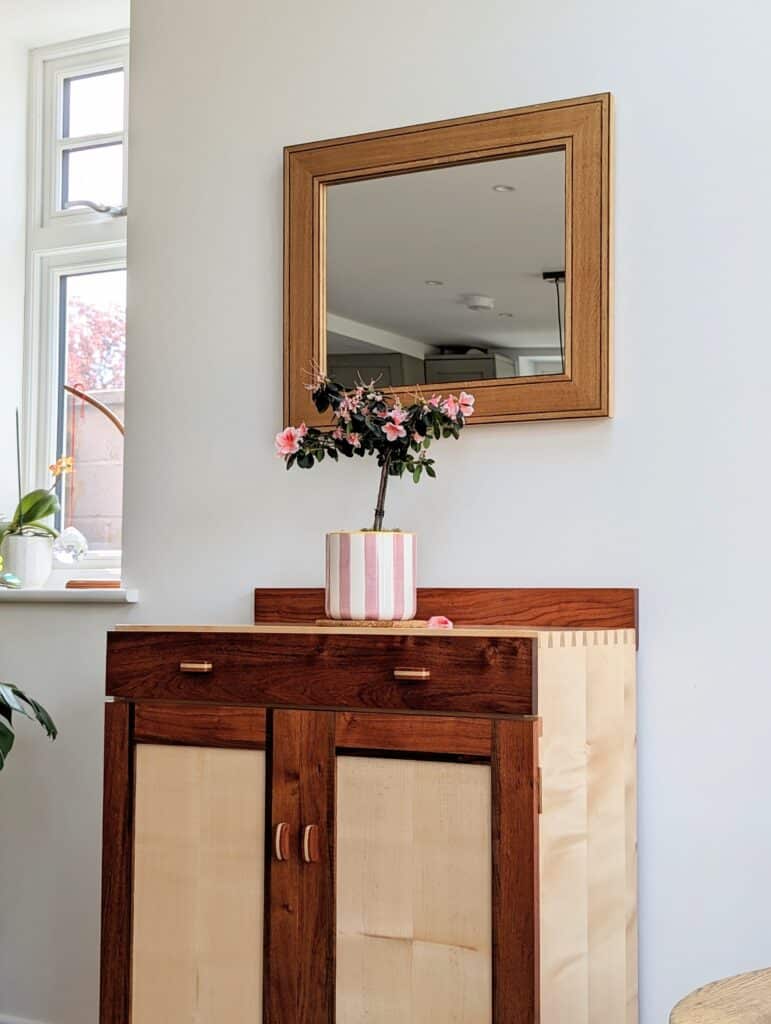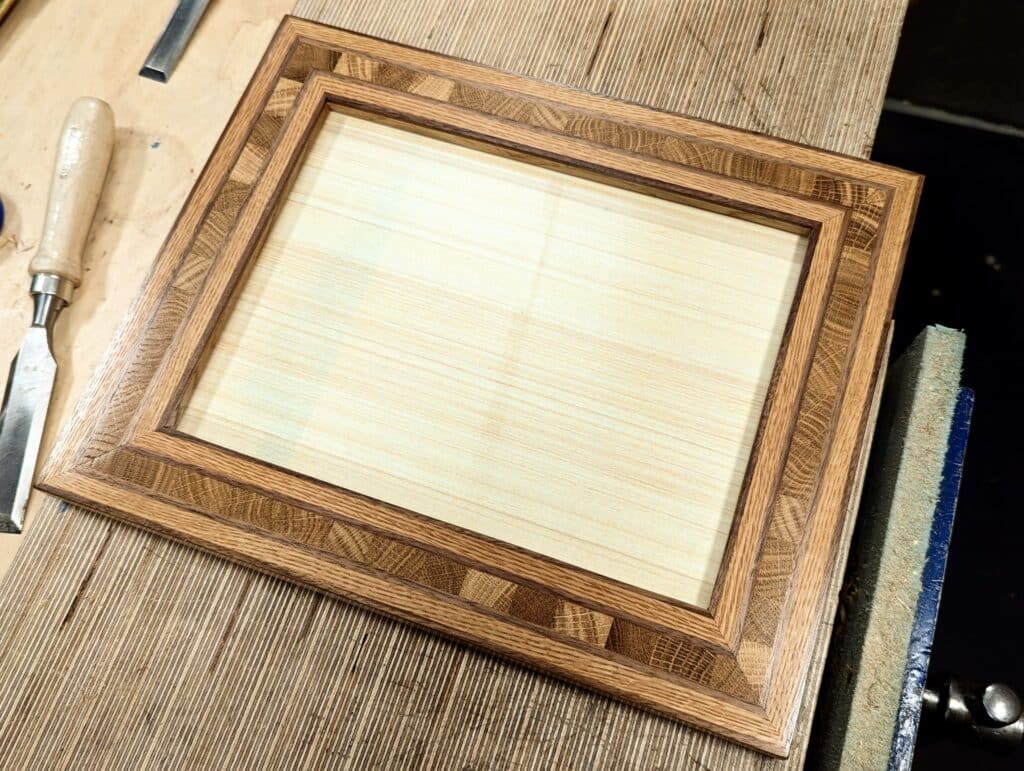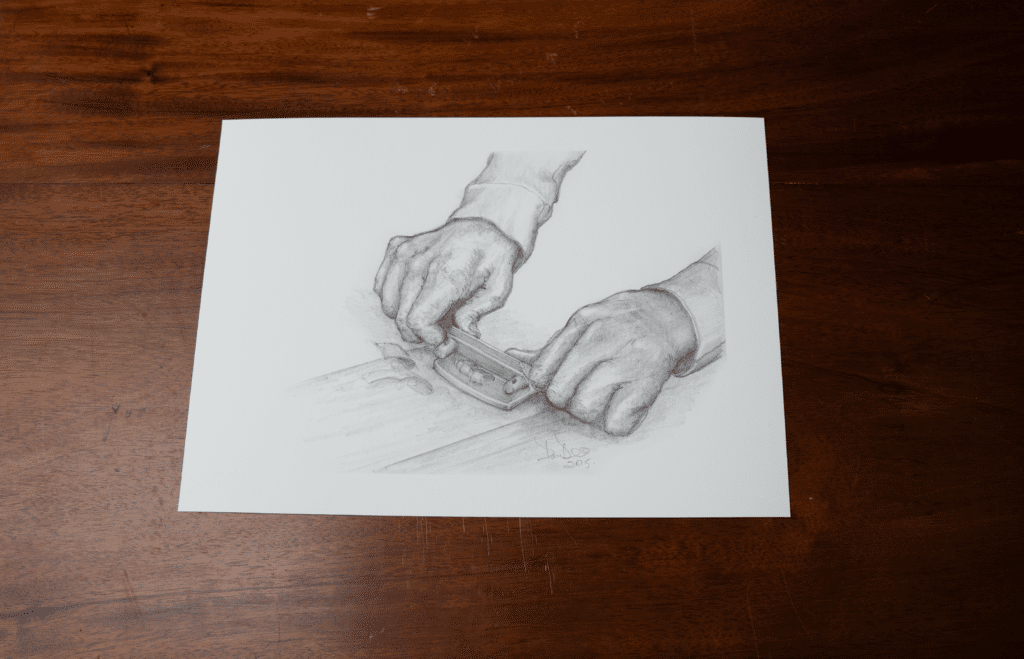Selling My Drawings
Drawing is very much a part of my life be that technical drawing with straight lines or freeform sketching to copy what I see. As a child, my drawings were just for me. Birds and animals came from my graphite tips where I copied images from books on rainy days. When I started working with wood I began technical drawing. It was a useful skill and one I needed for both reading drawings and plans and also making my own to convey realistic ideas to others. In my work and estimating costs to customers this has proved invaluable. I never bid on a job I didn’t end up getting and that includes the two matching credenzas I designed for the White House in 2008.

When I wrote for woodworking magazines in the USA and the UK through the later decades I did all of my own drawings then too but where I enjoyed drawing all the more was for my books and blog writings. I’ve even used them on Facebook; when no picture was available for lack of a photo I simply pencilled in a sketch that worked.

I recently made a series of mirror frames for Sellers’ Home which are now hung in the dining room and the hallway. I was pleased with the result and carried on ‘after hours‘ making some personal and unique versions for a couple of cluster groupings of pictures I’d drawn and wanted to hang. I combined oak and walnut with a combination of long-grain and end- or block-grain to create a unique frame that showed handwork along with the hands in my drawings.
I decided to sell some copies of my own originals using woodworking hand tools and my own hands. The only place to purchase them from, just in case, is from our own Rokesmith Ltd site here: https://rokesmith.com/product/print-cabinet-scraper/

They have been professionally scanned from my personal sketchbooks and printed on Cotton Rag 300 gsm paper. The sketches are unframed and are UK A4 sized (210 x 297 mm/8.3 x 11.7 inches). Hopefully, you will make your own frame and hang it somewhere you like.


Recently I’ve been reading a book about the technical aspects of NASA’s Apollo mission from its first conception in the late 50’s through the moon landing. One of the fascinating people in the story is Caldwell Johnson who more or less stumbled into the program because of his drawing skills and his ability to construct scale models from scraps of wood and other materials. He dropped out of a university engineering program after one year. He eventually co designed the lunar excursion module and the capsule that carried the third non landing astronaut. Drawing was the central element of his design process and they were so good that NASA engineers loved seeing their work take form on his drafting table. The technical parameters of the vehicles were looked after by engineers and draftsmen but the core design and functionality was largely thanks to someone who thought and worked exactly like you! Many thanks for sharing all this with us.
When I was in high school I tried very hard to get into a woodwork course but all I could get into was an architectural drafting course. I had never done this before and completed the 3 month course in 3 weeks so the teacher had me do it over again. This involved designing a house and all of the construction details and measurements. Did that stint in 2 weeks and after that I was tasked to help the rest of the class that was struggling. I learned how to use scale and orthographic projection and it has stayed with me my life. Apparently not many of us are blessed with this skill and I have used this in my shop since the 70s. I can see the project in my mind and I can draw it. I do not know anyone else that is able to do that. Hmmm
It was enjoyable to read about making sketches of your work you plan to do. I also have always done this but not with the skill of an artist. Nevertheless sketching out the layout of a project has been invaluable for me over the years. I also took mechanical drawing when in junior high school and the basics I learned there have been helpful. I may even get myself a basic drafting table so my future drawings will look better and more to scale. It is pl3asurable for me to look at my past project drawings too, they might even look good framed!
That’s a wonderful idea. Will there be more drawings available later, or will it stay with the card scraper for now?
Yes, I have some more I want to have digitised.
Sorry I could not resist.
“UK A4 ”
Sorry, this is an ISO standard (ISO 216) [“I” stands for International].
This comes from a DIN standard (DIN 476 dated 1922).
The beauty of this standard is that when one cut a sheet in two, the two parts have the same form factor (width/length) as the initial sheet.
This is handy when making a photocopy with a reduction (0.707) factor preprogrammed in the photocopy machines wich allows (starting from two A4 pages) to print two pages in A5 format on a single A4 page.
The form factor is 1/1.414… (1.414… being the square root of 2).
The dimensions of the A0 sheet is such that it is 1 square meter.
So A4 is 1/16 of a square meter ( 16 being 2 exponent 4).
Sylvain, You always amaze me!
The above being said, I always have admired the drawings you made of tools and hands.
Hands are notoriously difficult things to draw.
I realise it’s a drawing from a photo and not life (Escher perhaps most famously with the lense, self portrait from life).
But that’s a really good drawing.
I’ve been told before in relation to artisonal trade that drawing is one of the more valuable skills. It shows.